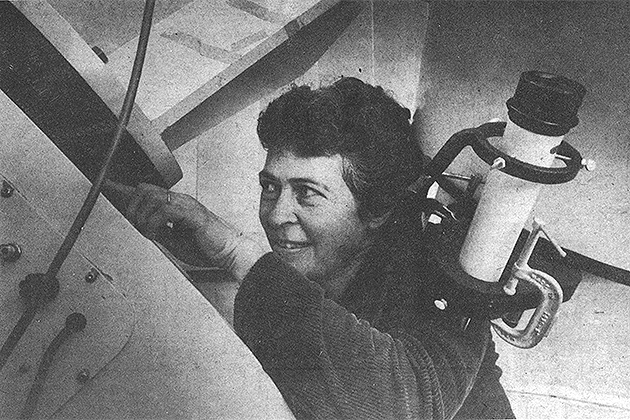
A lot has changed in the field of astronomy since the late 1960s, when Cynthia Peterson joined the UConn faculty as the first female professor in the physics department and people first walked on the moon.
Just a year after she began, the University needed someone to teach astronomy, and Peterson agreed. She estimates she has taught more than 9,000 UConn undergraduates, not to mention numerous students and others attending UConn outreach programs, over the past four-and-a-half decades.
Peterson is one of three UConn employees celebrating their 45th year at the University this month. The others are business professor Vincent Carrafiello and professor of law Lewis Kurlantzick. A further 180 employees are being recognized for milestones of 25 years of service (in increments of five) or more, with an event in Rome Ballroom today.

Peterson says astronomy has changed so fast, it has been like teaching a new class every year. Not only have the Hubble Telescope and Kepler space observatory, for example, vastly accelerated the discovery of the universe, nearly 2,000 planets have been discovered outside the solar system. Astronomers now have access to thousands of images online, including deep space photos and NASA videos, and can observe the universe in real time “24-7,” using pictures taken from different time zones around the world.
Teaching at the college level has also been transformed over the years. Computers are ubiquitous, and most students now use personal computing devices. Learning is both more interactive and more self-directed, says Peterson, and students are far more invested in their independent research projects than they were when learning was more passive.
Some things haven’t changed, though: lab work is still important, she says, and there is nothing to beat live “eye-to-eyepiece” telescope observation rather than just looking at pictures.

Looking back, Peterson reminisces about attending a Pete Seeger concert at Jorgensen Auditorium (now the Jorgensen Center for the Performing Arts) in the early 1980s, even as she hopes to hear former Secretary of State Hillary Clinton on stage there later this month.
Not all her memories of Storrs are positive, however: she recalls being at the Faculty Club (formerly housed in the Tasker Building) in 1986, when the Challenger Space Shuttle disintegrated shortly after take-off and all its crew died. “We were devastated,” she says.
For her first 35 years at UConn, Peterson was the only woman on the physics faculty, and she remained the only female physics professor with tenure for an additional five years. She says she is grateful to the late Professor Paul Klemens, former physics department head, who not only hired her but continued to mentor her during her early years.
In January this year, a woman was appointed to lead the physics department, laser physicist Nora Berrah. “It’s about time,” says Peterson.

Over Peterson’s career, the Storrs campus has also undergone an immense physical transformation, although some of her favorite places haven’t changed much. She has fond memories of hours spent in the rooftop observatory atop the Physics Building, especially for the dawn transit of Mercury (when the planet Mercury passes between the Sun and the Earth) in 1970, and for the 2012 transit of Venus, which drew 130 people despite cloudy conditions.
But her all-time favorite place on campus remains the Planetarium on North Eagleville Road, built in 1954 by former Provost Albert Waugh, which she still uses for teaching and outreach. Peterson, who was introduced to stargazing as a child by her mother, says she used to have lunch there with her two children when they were young, and talk about the stars.


